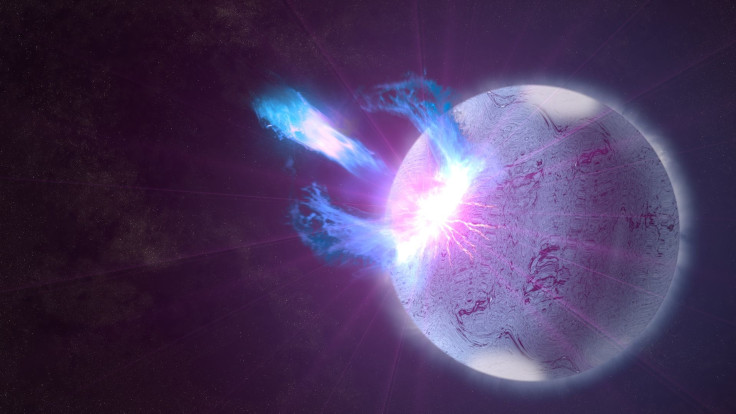How Approaching Magnetar Could Destroy Earth And Vaporize Humans [WATCH]

KEY POINTS
- A magnetar is a remnant of a supernova explosion
- Magnetars could disrupt the molecular structure of living organisms
- A magnetar could trigger starquakes and destroy Earth
A scientific video explained what would happen to Earth if the strongest natural magnet in the universe suddenly enters the Solar System. According to the video, the presence of a nearby magnetar could wipe out all life on Earth by affecting atoms or ripping apart the Earth’s ozone layer.
Like neutron stars, magnetars are the remnants of a supernova explosion. However, they are significantly denser and contain a lot more matter than neutron stars, which is why they have the strongest magnetic field in the universe.
The closest magnetar from Earth lies about 50,000 light-years away in the constellation Sagittarius.
According to a new video released by the YouTube channel What If, magnetars are relatively harmless, but if one gets too close to Earth, it could destroy the entire planet and all life on it. From a very close distance, a magnetar’s powerful magnetic field could instantly scramble and atoms and bioelectrical field of the human body.
In other words, tear up the body’s molecular structure, causing humans to disintegrate instantly.
“Whatever you do, try not to get any closer than 1,000 km (620 mi) from a cosmic invader,” the video stated. “Because if you did, your atoms would get stretched out of shape. Your bioelectric field would get scrambled, disintegrating your molecular structure. And your body would just disappear.”
But aside from causing havoc up-close, magnetars can also affect the planet from great distances. According to What If, these powerful cosmic objects can trigger starquakes, which happens when the crust of stars crack open and emits massive amounts of radiation.
If a star near Earth experiences a starquake, the planet could get bombarded by high levels of radiation, which could compress its magnetic field and strip away the ozone layer. Once this happens, the inhabitants of Earth would be vulnerable to the fatal effects of cosmic radiation.
“This blast of radiation could compress the Earth’s magnetic field and partially ionize Earth’s atmosphere even from 50,000 light-years away,” the video stated. “First, it would destroy our ozone layer. Then, it would wipe clean most of the planet’s surface, along with all life as we know it.”
© Copyright IBTimes 2025. All rights reserved.





















